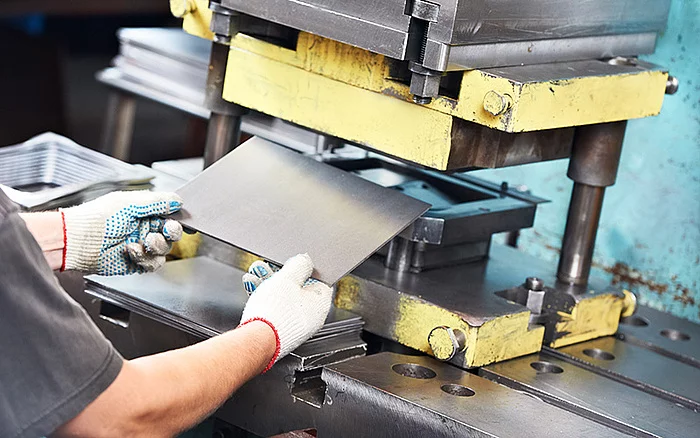
What does "patent pending" mean (and can it protect inventions)?
The process of applying for and receiving a patent is measured in years, even when expedited. In the meantime, it is only natural for inventors and organizations to seek ways to discourage unauthorized duplication of their creative efforts and lay the groundwork for when their "in-progress" Intellectual Property (IP) rights come to fruition.
Though the expression "patent pending" should be familiar to someone immersed in English-language culture, its exact meaning is often handwaved away. It is important to understand how, when and where these words fit into the patent application process in order to get the most out of the IP framework and avoid any pitfalls.
What does "patent pending" mean?
Using the term "patent pending" claims that one or more patent applications for a device, method, program or design are active at a relevant patent office. In essence, the words serve as a warning to rivals that a (potential) future patent has a recognized filing date. Though the phrase carries no legal effect, its misuse can have serious ramifications. For instance, the Munich Higher Regional Court ruled on June 1, 2017 (U 3973/16) that the English words "patent pending" affixed to a product constitute misleading advertising since they are liable to be misunderstood by the relevant public.
Where permitted, "patent pending" or a similar phrase can be used on a product from the moment an application is filed with the appropriate patent office, even though many new inventions would not be market-ready at this early stage of the IP life cycle. At any rate, most pending patent applications are published in a journal or periodical issued by the handling office 18 months after their filing date. From this point, the would-be patent can be searched for and found in online databases. Whether searchers use national or regional databases like the World Intellectual Property Organization (WIPO) PATENTSCOPE repository or private search engines like Dennemeyer Octimine, the pending application will be there.
Going public: what it means for applications
Once a pending patent has been officially published, it takes on certain legal characteristics — whether it is eventually approved or not. For one, the pending application and its associated materials — abstract, claims, description, drawings and so on — can then be considered prior art. As such, someone filing an application for an invention that is similar or related to your pending patent would have to acknowledge awareness of your work as part of prior art disclosures. Even if your application is twice rejected, fails an appeal and becomes abandoned, the fact of its publication means it may still constitute prior art in the United States.
Also — as mentioned — publication of a patent application reveals the filing date. This date establishes the patent's maximum lifespan and is crucial for any infringement lawsuits that may occur following grant.
Patent pending notices and provisional applications
The most obvious examples of such notices are seen with inventions that are currently on the market as physical products. The phrase is sometimes used on packaging or, in other cases, written on the product itself. Alternatively, a company or inventor could include such a notice on their website. It must be said, however, that pending notices are not required by patent law.
In jurisdictions that offer them, the "patent pending" expression may be used to indicate a provisional patent application. For instance, per the United States Patent and Trademark Office (USPTO): "A provisional application provides the means to establish an early effective filing date in a patent application and permits the term "Patent Pending" to be applied in connection with the invention."

Whether you decide to use a "patent pending" notice or not will have no effect on the outcome of your application. Nevertheless, displayed online or on physical products, it sends a clear signal to competitors that you have confidence in the strength of your IP.
Does pending status offer any patent protection?
In a word, no. Most of the world's jurisdictions use a form of the first-to-file system to determine a patent application's priority over another, i.e., the filer with the earliest date takes precedence. However, exceptions can apply in the event of a competing patent with an earlier foreign registration date or where an applicant can conclusively prove that a prior filer directly copied their idea.
Thus, demonstrating that a patent is pending can deter competitors from trying to file a similar application. Patent pending status implies that infringement could (retroactively) trigger legal action once the patent is granted. The key point is that a pending patent is not enforceable while it is still under consideration by examiners. You cannot sue anyone for patent infringement until you possess a granted, active patent.
In addition, fraudulently claiming the pendency of a patent — e.g., for a product with no related patent application on file or one for which the application has been denied — may lead to sanctions from patent offices. The USPTO levies penalties of up to $500 USD per violation.
From pending to grant
Predicting how long it takes to get a patent can be a tall order, but a pendency of two to five years can be expected from initial filing to final disposition (issuing of a grant or rejection). Of course, these figures are highly dependent on the jurisdiction, backlog and technology sector. During that time, inventors and organizations must patiently wait for patent office actions, responding to all correspondence in a timely manner.
Once a patent is granted, it is necessary to remove any "patent pending" notices from new product batches or other public materials and replace them with notations affirming the patent grant. Depending on local regulations, these can include the patent number or simply name the issuing authority. The cost of doing this is another factor to consider when deciding whether to use a "patent pending" notice; after all, updating a website or printed packaging is much cheaper than modifying dies for casting or stamping metal parts.

Though the patent application process may seem very long at the outset, the pendency period can be a blink of an eye on the scale of industrial manufacturing. Modifying your production methods to accommodate a predictable change in status might not be worth the expense.
Maximizing your chances of success
The best way to minimize the hurdles while waiting for a patent grant is to submit a well-drafted application and maintain prompt communication with all involved patent offices.
Before filing your application, conduct an exhaustive prior art search for anything similar to the invention you aim to patent. An AI-driven patent search engine like Octimine that quickly and efficiently scans national, regional and international databases will be immensely helpful in this endeavor, as will be the input of a skilled patent attorney. Having an expert assess the novelty of your invention and provide a written report of their conclusions strengthens your application and helps avoid the dangers of overlooking prior art and overstocking your filing with irrelevant material.
Though factors like office backlog are beyond applicants' control, an examiner will likely go through a clear, thorough application faster. Since requests for additional material or amended claims slow the process, an application drafted by a specialist is strongly advisable. Whenever patent offices do need more information, comply with these requests in good time and include any applicable fees. (Many offices allow three to six months for responses.)
Finally, you can request expedited processing from offices that offer it. For example, the European Patent Office (EPO) charges no fees for the Accelerated Prosecution of European Patent Applications (PACE) program. Various patent offices also offer expedited procedures for environmentally sustainable inventions at no additional cost, including the Climate Change Mitigation Pilot Program in the United States and the Green Channel in the United Kingdom.
Dennemeyer's expert attorneys and other patent professionals have the experience and knowledge to draft patent applications with the highest chances of success. Our team stands ready to provide legal advice and services for all your patenting needs, pending your call.
Filed in

Take an in-depth look at medical devices and how IP will foster, inform and protect more innovative healthcare experiences.



